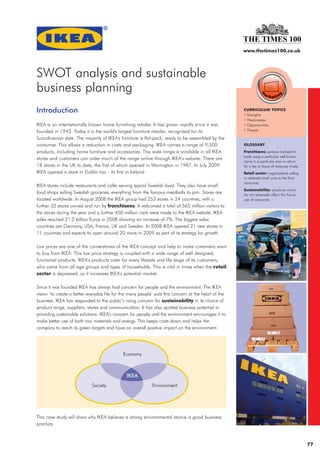IKEA is the world's largest furniture retailer known for its Scandinavian style flat-pack furniture. It has over 250 stores worldwide and offers around 9,500 products. IKEA uses a SWOT analysis to help achieve its sustainability goals. Some of IKEA's strengths that help it pursue sustainability include its global brand, vision of better lives for many, and strategic use of materials. IKEA sees opportunities in growing demand for greener products and focuses on solutions for sustainable living, resource use, and social responsibility.



